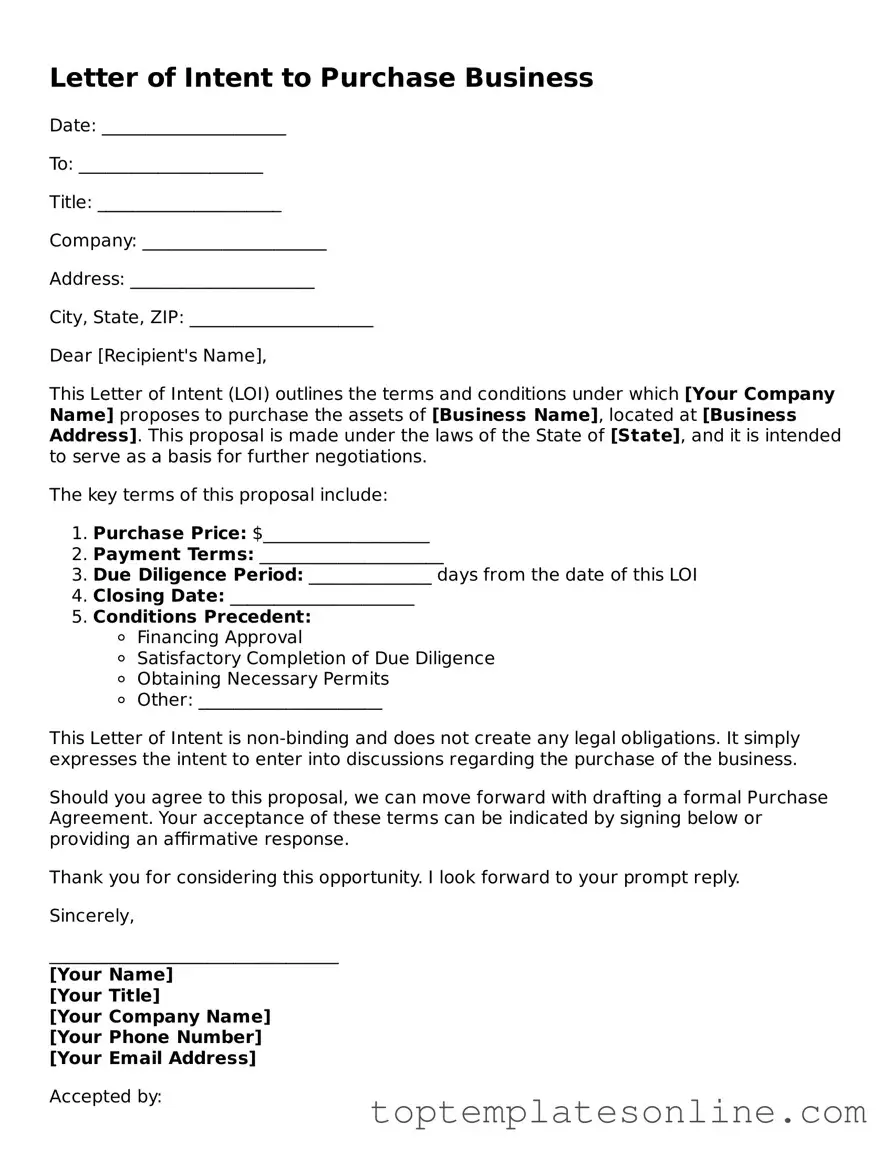Attorney-Approved Letter of Intent to Purchase Business Form
The Letter of Intent to Purchase Business form is a document that outlines the preliminary agreement between a buyer and a seller regarding the terms of a potential business sale. This form serves as a foundation for negotiations and helps clarify the intentions of both parties. By establishing key terms early on, it can streamline the process and reduce misunderstandings later in the transaction.
Customize Letter of Intent to Purchase Business Here
